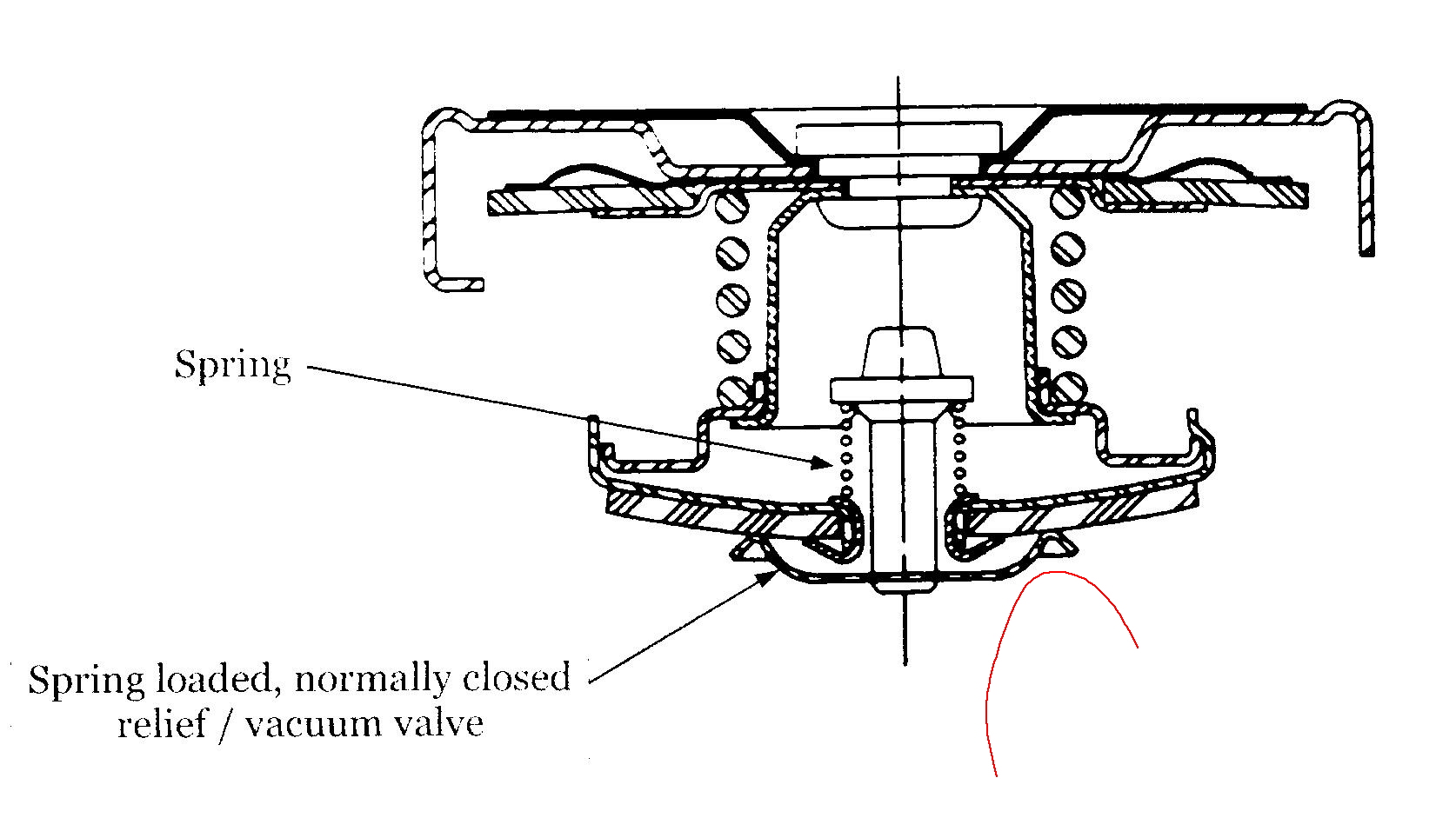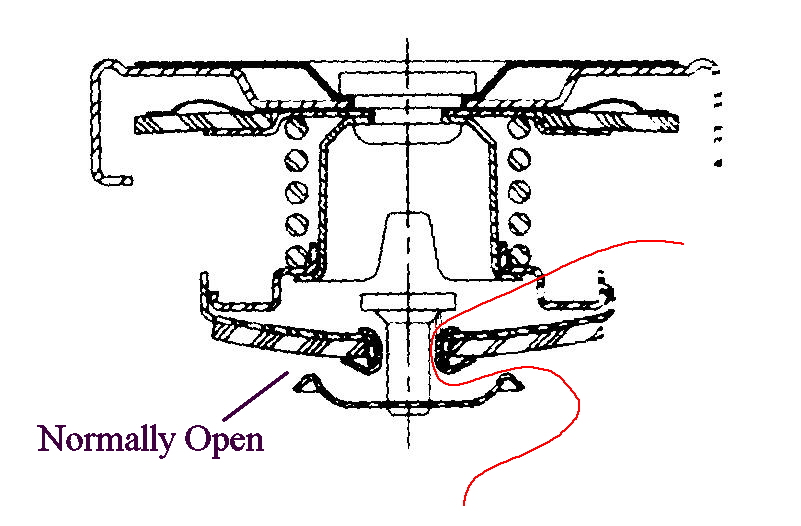Talyn
NAXJA Forum User
- Location
- Radford, Communistwealth of Virginia
I was chasing what I thought was a problem with my cooling system in my 2000 XJ. The system took a long time to pressurize. It never ran hot, got up to temp quickly, has no leaks, never loses fluid, and heat out put is good. It did pressurize but took quite a while to do so. I never noticed this before but may have not really checked. Being winter I believe this was part of my confusion. So I did some research and it appears to be normal operation due to the vented style radiator cap. It takes the 10231 cap mentioned below.
From Stant:
Why would we not want the system to be pressurized sooner to make it more efficient?
In the process I compared the pressure in my 97 ZJ 5.2L. I noticed that it creates pressure much sooner. This led me to do a bit of research.
XJ 4.0:
91-95 13 psi non vented cap
96-01 16 psi vented cap
TJ 4.0:
91-92 13 psi non vented cap
93-95 16 psi vented cap
96-06 18 psi non vented cap
ZJ 4.0:
93-96 16 psi vented cap
97-98 18 psi non vented cap
ZJ V8: 18 psi non vented cap
WJ 4.0:
99-04 18 psi non vented
WJ V8:
99-02 20 psi non vented
03-04 18 psi non vented
This would explain the difference between the pressure in the ZJ vs. XJ that I noticed. However, why the bouncing back and forth for psi and vented vs. non vented caps? And why do the ZJ TJ and WJ use higher pressure caps for some years?
To me it seems like building pressure sooner and having more of it to be beneficial. 1) pressure increases the boiling point of the liquid 2) it reduces localized boiling of the coolant and as a result reduced hot spots.
From Stant:
Vented Radiator Caps
There is one coolant cap that is quite different others: Stant #10231. Some people think this cap is broken when they first see it because the part that goes into the fill pipe to seal the system “wobbles.” This is a vented coolant cap. A “Vented Coolant Cap,” sometimes referred to as a “Partial Pressure” cap, may not immediately let the system realize pressure upon thermal expansion (warmup).
The cap has a small disc at the bottom of the cap that is a vacuum valve. That vacuum valve hangs down in the open position until the cap is subjected to rapid expansion of coolant or steam, which closes the valve in a sealed position. At that point, the system is pressurized and helps control overheating and enhances system efficiency. This also means the vehicle can be idling without having a pressurized cooling system and could be “venting” vapor into the overflow reservoir.
Why would we not want the system to be pressurized sooner to make it more efficient?
In the process I compared the pressure in my 97 ZJ 5.2L. I noticed that it creates pressure much sooner. This led me to do a bit of research.
XJ 4.0:
91-95 13 psi non vented cap
96-01 16 psi vented cap
TJ 4.0:
91-92 13 psi non vented cap
93-95 16 psi vented cap
96-06 18 psi non vented cap
ZJ 4.0:
93-96 16 psi vented cap
97-98 18 psi non vented cap
ZJ V8: 18 psi non vented cap
WJ 4.0:
99-04 18 psi non vented
WJ V8:
99-02 20 psi non vented
03-04 18 psi non vented
This would explain the difference between the pressure in the ZJ vs. XJ that I noticed. However, why the bouncing back and forth for psi and vented vs. non vented caps? And why do the ZJ TJ and WJ use higher pressure caps for some years?
To me it seems like building pressure sooner and having more of it to be beneficial. 1) pressure increases the boiling point of the liquid 2) it reduces localized boiling of the coolant and as a result reduced hot spots.


